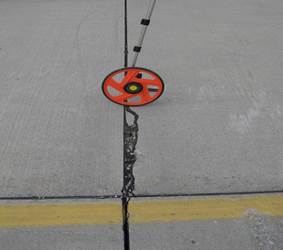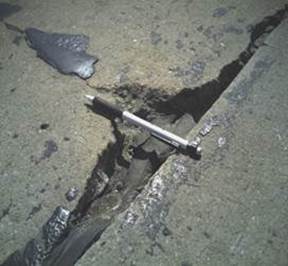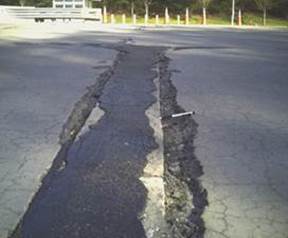
L - joint spalling severity is determined by the spall deterioration and length/width matrix described in Table 5. Spalls that have all tight pieces; spalls less than 2 feet long with loose pieces; or spalls less than 2 feet long and less than 4 inches wide with missing pieces are all considered low severity.

M – joint spalls over 2 feet long with loose or missing pieces or less than 2 feet long and over 4 inches wide with missing pieces are considered medium severity.

H – joint spalls which have missing pieces, are over 2 feet long and wider than 4 inches are considered high severity.